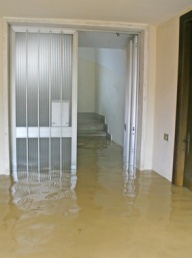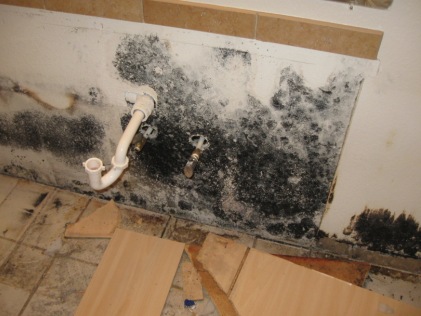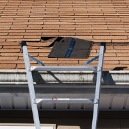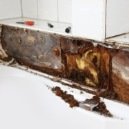Find a pre-screened local mold removal specialist Free Estimate
Find a Mold Specialist Now
Click or Call, Toll-Free 24/7
Homeowners Insurance Mold Coverage
Do you know if you have homeowners insurance mold coverage? Homeowners insurance does not always cover mold removal and you don’t want to wait until you need to file a mold insurance claim to discover that your policy doesn’t cover it. Homeowners insurance for mold is important because the cost of mold removal can be significant and many homeowners simply can’t afford to cover the full amount out of pocket.
The Cost of Mold Removal
The cost of mold removal varies greatly depending on a number of factors, including the location of the mold (it costs more to remove mold growing inside a wall or in heating and air conditioning ducts than it does to remove mold growing under a sink, for example) and the amount of the mold. The typical cost for mold removal ranges from about $4,000 to $15,000 or more, though; it’s usually not cheap. That’s because it’s difficult to remove all traces of mold, but it’s important to be thorough or else mold will quickly return, and because it’s important to follow a strict safety protocol to prevent illness due to mold exposure. Since mold removal can be quite costly, homeowners are often unpleasantly surprised and disappointed when they discover their homeowners insurance doesn’t cover the cost.
Homeowners Insurance Mold Coverage
Some homeowners insurance policies don’t cover mold removal at all. In other cases, homeowners insurance mold coverage is limited to certain circumstances. If mold occurs as a result of a sudden and accidental problem that is covered, then your insurance is more likely to cover the mold removal than if it’s simply a matter of neglected home maintenance. For instance, your policy might cover mold removal following storm damage or fire damage to your home but not mold removal following a flood or resulting from a leaky pipe. Your policy might limit the amount it will pay for mold removal and the limit might be lower than the typical cost of removing mold. Your policy might cover the cost of mold removal but not other costs associated with a mold problem, such as mold testing.
Contact your insurance agent if you have questions about what your policy will and will not cover. If you’re not fully covered for mold removal, it might be possible to add on that coverage if you want to make sure you’re protected.
Filing Your Mold Insurance Claim
Contact your insurance agent for specific instructions on how to file your mold insurance claim. It’s important to follow the instructions exactly and to do so in a timely manner, because otherwise your claim may not be paid even if your policy covers mold removal. In addition, you should report any water damage to your insurance company as soon as it occurs, because you never know if water damage will lead to the development of a mold problem later on. If you discover a mold problem has developed a couple months down the road, you’ll want a record of the event that likely caused the problem.
Most insurance companies work closely with disaster relief companies. If your home suffers water damage the insurance company will get them to your house quickly to dry it out before any mold can start growing.
When Mold Removal Is Covered by Insurance
Check with your insurance agent to find out what procedures you need to follow. They will probably want documentation showing that there is in fact a mold problem in your home and an estimate of the cost for mold removal. Most mold removal professionals offer free consultations and will come to your home and assess the problem at no cost to you. They will then provide a written estimate for your insurance company, detailing what work needs to be done and what it will cost. Most mold removal professionals are accustomed to dealing with insurance companies and can assist you in filing your claim properly. For a list of qualified, experienced mold removal professionals in your area, just follow the link.
Return From Homeowners Insurance Mold Coverage To Our Main Insurance Page
Free Home Inspection By A Mold Removal Specialist
Search This Website
 Mold from a flood is usually only covered if you have flood insurance.
Mold from a flood is usually only covered if you have flood insurance.Recent Articles
-
See Our 5 Recommended Mold Removal Companies in Covington, KY
Apr 16, 25 12:59 PM
-
See Our 5 Recommended Mold Removal Companies in Wheaton, IL
Jun 20, 24 10:33 AM
-
See Our 5 Recommended Mold Removal Companies in Aberdeen, SD
Oct 08, 21 04:05 PM





